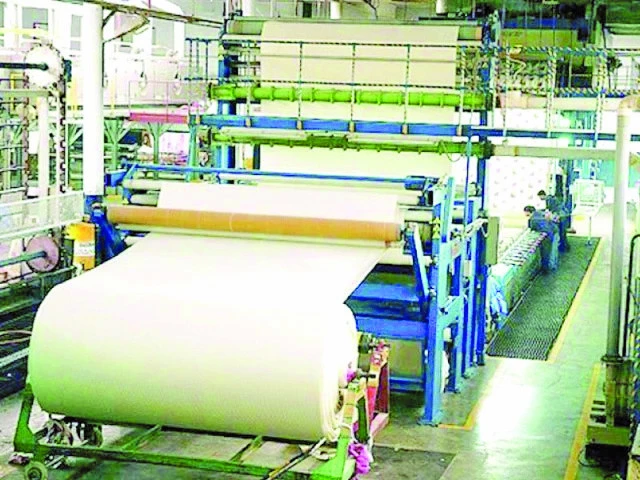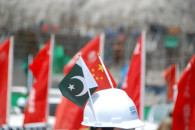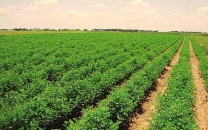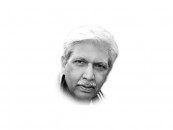Why nations advance and Pakistan struggles
Without embracing industrialisation, diversification and strong institutions, we risk permanent fragility

During the colonial era, experts believed that the true economic powerhouses lay in the Caribbean and Latin America, while North America was seen as relatively insignificant. Even the philosopher Voltaire famously dismissed the British-French struggle over Canada as a battle for "a few acres of snow."
At the time, territories like Guadeloupe seemed far more valuable than the vast, cold lands of Canada and the United States. Yet history unfolded differently; North America eventually outpaced its southern counterparts in economic growth and prosperity. The question remains: why did the once-wealthy regions fall behind?
Historical experiences of successful nations show several key factors that explain long-term economic success, particularly in terms of growth in per capita income, sustained economic growth, and broader economic development. These are as follows:
First, industrialisation and technological advancements have played a crucial role. In many emerging economies, these forces have created new job opportunities and expanded access to education, helping to build a thriving middle class.
Second, the complexity and diversity of a nation's export economy are strong indicators of its underlying knowledge base and expertise. A country's ability to produce and export high-value goods and services reflects its technological capabilities, industrial sophistication, and specialised skillsfactors that go beyond simple measures of human capital.
Third, economies that rely heavily on a small number of natural resources are more vulnerable to economic instability and political corruption. Resource-dependent nations often struggle with governance challenges, making it difficult to achieve sustainable growth.
Fourth, the structure of a nation's economy, whether formal or informal, plays a significant role in development. In well-regulated economies, clear legal and institutional frameworks promote transparency, competition, and fairness. However, in countries with weak institutions, the informal economy often flourishes, leading to black markets and unregistered businesses.
While informal markets can provide short-term relief for individuals, they ultimately undermine economic development by reducing tax revenues, discouraging investment, and reinforcing inequality.
Finally, the strength of a country's institutions is perhaps the most critical factor in long-term economic success. Institutions shape the "rules of the game," influencing political, economic, and social interactions. As economist Douglass North (1990) argued, strong institutions create incentives that reduce uncertainty and promote efficiency, leading to economic growth. These institutions range from broad legal and regulatory systems to specific mechanisms such as independent central banks, balanced budget laws, and trade agreements, all of which play crucial roles in fostering economic stability and prosperity.
Ultimately, the rise of developed countries to economic dominance was not a historical accident. Their success can be attributed to a combination of industrialisation, economic diversification, strong institutions, and a well-regulated market economy. These are the factors that many natural resource-rich nations have struggled to develop.
The fragility of Pakistan's economy and the challenge of achieving long-term economic success - particularly in terms of per capita income growth, sustained economic growth, and overall economic development - will persist indefinitely in the absence of these attributes. Heavy reliance on agriculture and other natural resources continues despite the well-established fact that these have a negative relationship with GDP per capita.
Pakistan has yet to undergo a traditional structural transformation, a crucial driver of economic growth that shifts economic activity from low-productivity to high-productivity sectors. Typically, this process moves resources out of agriculture into textiles, followed by more advanced industries like electronics and machinery manufacturing. However, Pakistan's global market share in textile exports has remained stagnant over the past decade, and its electronics and machinery sectors have yet to gain momentum, limiting overall income growth.
Over the last five years, Pakistan's export growth has been primarily driven by the textile sector. However, this growth has not been the result of simply operating in a booming global industry but rather from an increase in Pakistan's market share within textiles. Sustained economic growth requires diversification into new, increasingly complex products. Since 2007, Pakistan has introduced 25 new products, contributing $5 per capita in income by 2022. However, while the country has successfully diversified, the production scale of these new products remains too small to generate significant income growth.
The growing population, escalating poverty levels, rising overall debt and its servicing, an unjust tax system, and the historical dependence on remittances, textiles, agriculture, and commodity exports will not produce the necessary changes for the economy to thrive in the long term. As a result, fragility will persist unless the practices and experiences of successful nations are effectively adopted both in substance and spirit.
THE WRITER IS A PHD ECONOMICS SCHOLAR AT UNIVERSITI SAINS MALAYSIA (USM)




















COMMENTS
Comments are moderated and generally will be posted if they are on-topic and not abusive.
For more information, please see our Comments FAQ